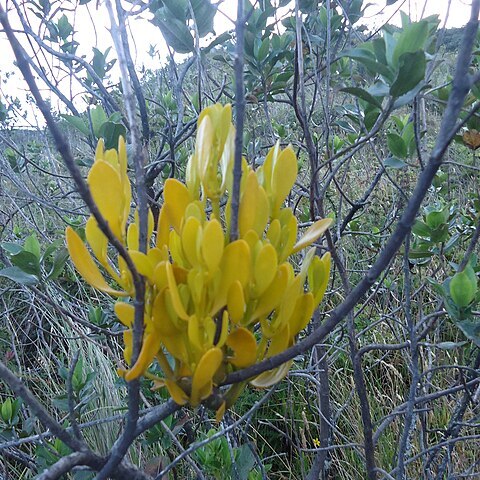Usually small, glabrous bushes, parasitic on dicotyledonous woody plants; internodes terete or somewhat angled; haustorial attachments at least initially simple, but cortical strands reaching into host tissues to various distances. Leaves simple, often rather succulent, in some species reduced to scales; lowest leafy organs on lateral branches and spikes in median or transverse plane. Vegetative lateral branches often, but not always, with basal cataphylls, but inflorescences less commonly so. Inflorescences axillary (very rarely terminal), in axils of leaf scales or foliage leaves, solitary or in clusters, rarely in compound inflorescences, being a spike with a peduncle of at least one internode and one or more terminal, fertile internodes with flowers produced, as in Phoradendron, in intercalary fashion; flower arrangement various but commonly in 1 or 3 series above each fertile bract. Monoecious or dioecious, in the former case with diverse patterns of sex distribution on spikes and/or individuals. Anthers presumedly 1-locular, dehiscing by a transverse slit. Fruit commonly white, with persistent perianth segments; endosperm copious, bright green, as is the weakly differentiated, dicotylous embryo. (x = 14).
Erect shrubs, more or less yellow, lacking adventitious roots. Leaves opposite, small or wanting. Cataphylls poorly developed. Flowers trimerous, very minute, dioecious, deeply immersed in depressions in the rachis of the spikes. Anther cells confluent, dehiscing transversely; pollen grains globose, the exine smooth. Pistillate flowers without staminodia. Staminate flowers showing no style. Fruit a berry, the seeds with endosperm.

